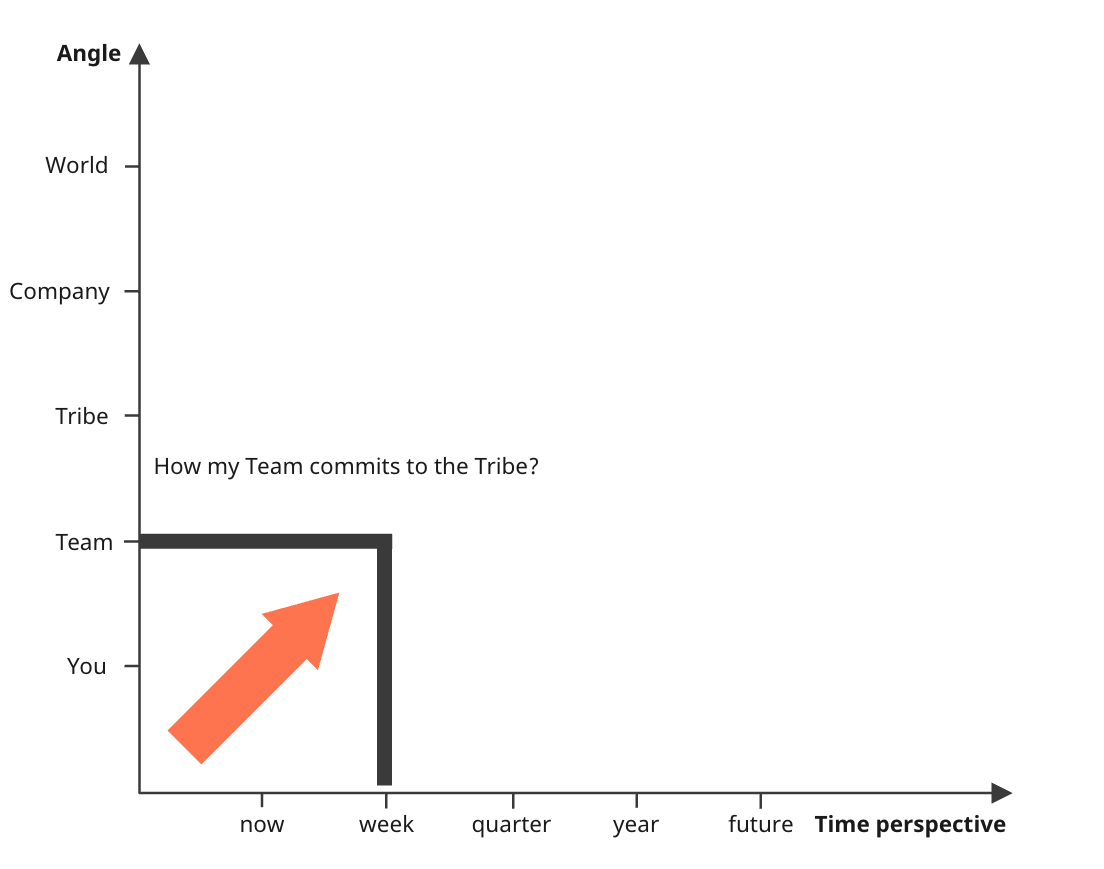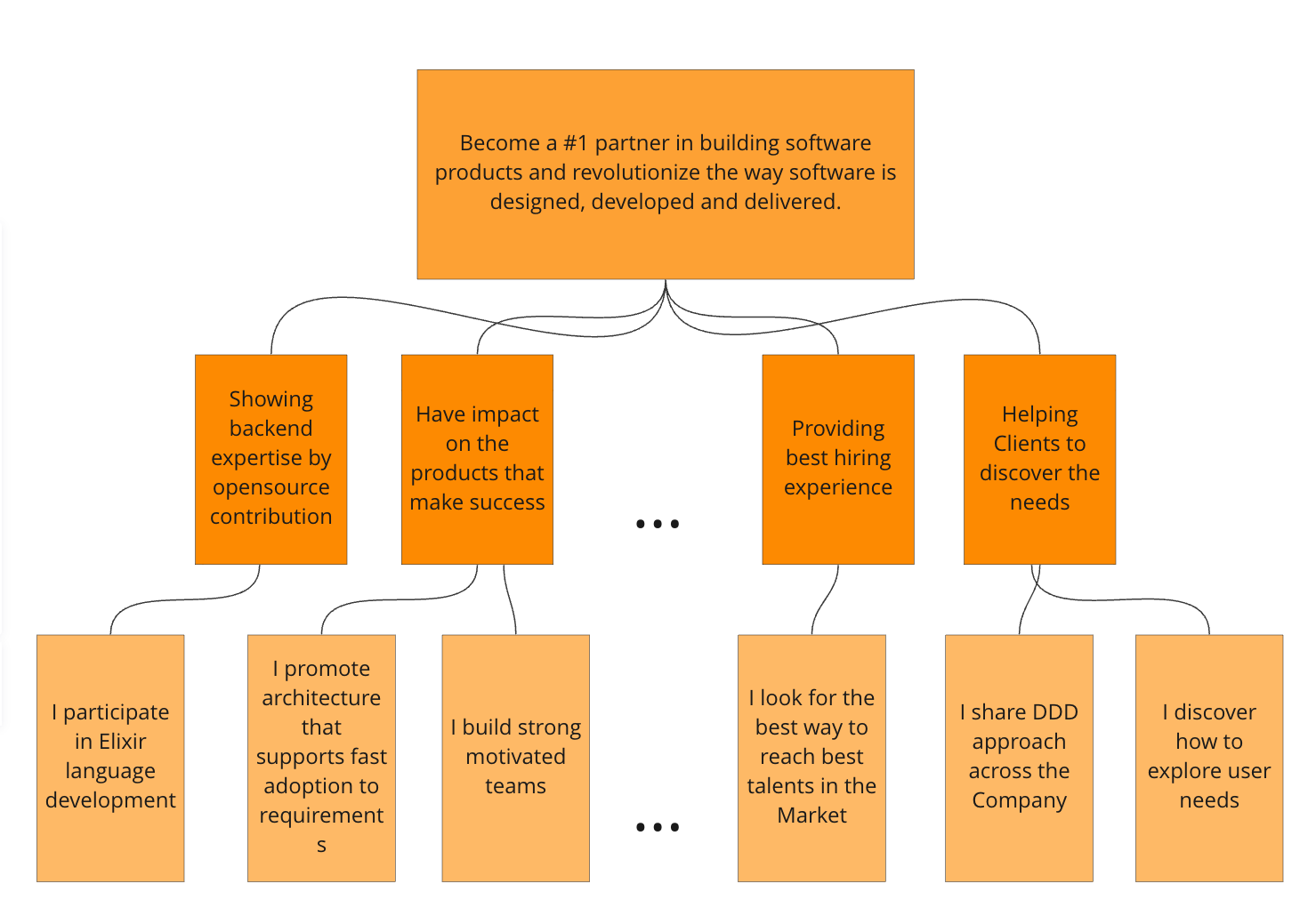Appunite’s mission is:
Become a #1 partner in building software products and revolutionize the way software is designed, developed, and delivered.
But what does that mean? 🤔
How do you measure if you are already #1? 📈
What does it mean to revolutionize the way software is designed, developed and delivered? 🧑🏻🎓
Finally,
Is this the right place for me?💞
How can you, as an individual, contribute to it?🤯
Our conviction is that technology is a tool for solving real-world problems.
→ We focus as an organization on growing our expertise in building product teams,
→ so we can consciously apply better and better approaches to the businesses of our Clients
→ so they can succeed, providing us with more challenging problems at the same time
→ so we can succeed, finding new challenging problems in future
Being a #1 partner is our North Star 🤩, we believe we can get there, but what’s more exciting, we enjoy the journey 🧗. The journey is where your involvement can make the biggest influence. It’s essential for our growth.
What’s the idea behind it?
We hire both experts and people without any professional experience. We are proud of it. I joined the company without any commercial background 10 years ago.
How is that even possible? We believe that curiosity and dedication drive growth. We love to give a chance to people who feel they can bring something valuable to the company.
We trust, that people can make judgments about where is the place they bring the biggest value. We optimize to create an environment where they can shine.
As with everything, it has its own downsides. The tradeoff is that we won’t tell you what to do.
We believe you will find out what’s the most valuable, most fun, and what moves the organization forward.
So how do you actually build influence in Appunite?
In other words, how did you develop your career in Appunite? Not by earning another point in your skill-set matrix. Definitely not by changing the role next to your name.
You do that, by changing the angle you look at things.
You start with your team, as this is the smallest organization unit. By constantly looking at how you can improve the way the team is working, you become an influencer. Then you start to think about what would make your team successful over a longer period of time. What actions should we take to be in a better position later?
Then you change your angle from the team perspective to something bigger, it can be either the technical tribe, a bigger team, or the company. You look at things with an even longer perspective.
Lastly, you start to think about how I would like the World to see our Company. What actions can I take to change that perception.
One example can be expanding your emerging practices to other teams. Do you see something is working really well? Share with others, and explain your approach. Do you deal with some problems? Let others know, they might experience the same, maybe you can group around it and solve it together. Do you see some key information missing during the process? Raise that issue, and suggest a solution. Day by day improve your environment.
You are moving on two dimensions, like in the matrix below.

How should I know what's needed?
Start with defining your own compass. What do you truly believe in, what are the values you care. Think about what drives you, what feels fun to do. No matter what job you are assigned to, you are empowered to change Appunite.
Look around. What makes you upset, what stresses you, what feels ineffective. Start with small steps to make your space a bit better. The worst thing you can do is to be focused on something, staying passive at the same time. It will frustrate you, and frustrate others. You don’t have to have ready solution. Sometimes it only takes to pursue the issue. Gather a wider context. Understand why it is the way it is or just raise the importance of the issue in the Organisation. The solution might come later. We do have good tools to do that. You can either raise an issue and explain your perspective in one of the Teams Challenges boards, or if you don’t know where to address your concerns you can create the Business as Usual card in order to identify a working group around it. Again, try not to generalize problems, and don’t project your team’s problems to the whole organisation. Try to solve it locally, if you can’t ask for help.
Ideas are ten a penny while the ability to execute counts for a great deal more
We don’t force anyone to do things this or that way. Meaning that having a good idea is not enough. It requires effort. The tradeoff is that you actually need to expose the benefit of the change, and convince coworkers that it’s worth putting energy into it. The reason we do so is that none of us own a monopoly on knowledge. We avoid top-down decisions.
We really value doing progress more, than being on the move. Meaning that we look at the outcomes of the initiative, not just actions around it.
How I can introduce the change?
The best way to expose the benefit of the change is by doing a small experiment. In your local environment, the team probably. If it succeeds, share the result, if it’s convincing, the rest will follow. That is the natural way of leading.
If you are wrong, no worries. That is one of the reasons we tend to do experiments on a smaller scale. Wrap up the results and let others learn from your failure. Decide what next.
So does this mean that everyone can do whatever they want?
Not really. One of our core values is to give and be open to feedback. You got an idea, gather the feedback from people around you, people who the change might affect. Be curious about what they want to say. No traction? Rethink your approach. Maybe you identified the need inaccurately.
But if you truly believe in something, fight for it, till you convince others that this is the way to go. By changing the environment, you build trust. Trust can level up your actions even higher. The way we look at the trust is perfectly envisioned here:
https://www.youtube.com/watch?v=kJdXjtSnZTI
How it can look in the practice?
We put effort into letting our teams find their own purpose, that supports our mission. We encourage you to start the conversation in your team about “what we are actually doing here”. Again, looking at a longer perspective makes you think a bit differently. We do software, so our teams can easily say that their job is to deliver a project. But what do we have from it in a long perspective? The project can end tomorrow, for various reasons. We try to think what are the outcomes of it. What we learned, what people we trained, and what leaders raised from that team. That is what moves us as an organization toward our North Star. That’s why it is beneficial to find common ground between team purpose and individual goals. Not only it helps with motivation, but it ensures that we grow people during the time of a project.

Is it a good place for me?
You probably already can get a grasp feeling who we are. Let me demystify who we are not.
We do not tell people what to do.
We do not tight ourselves to our roles and duties.
We don’t limit ourselves to the here and now.
We don’t have all the answers.
We don’t standardize things until we see benefits from them.
We don’t follow blindly our competition.
We don’t build leadership around authority.



